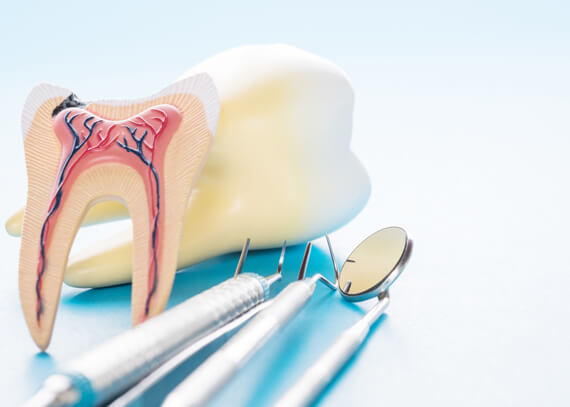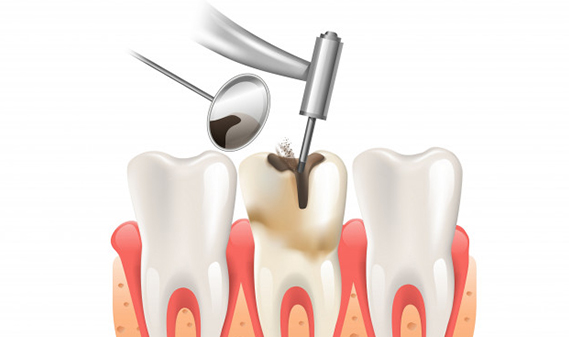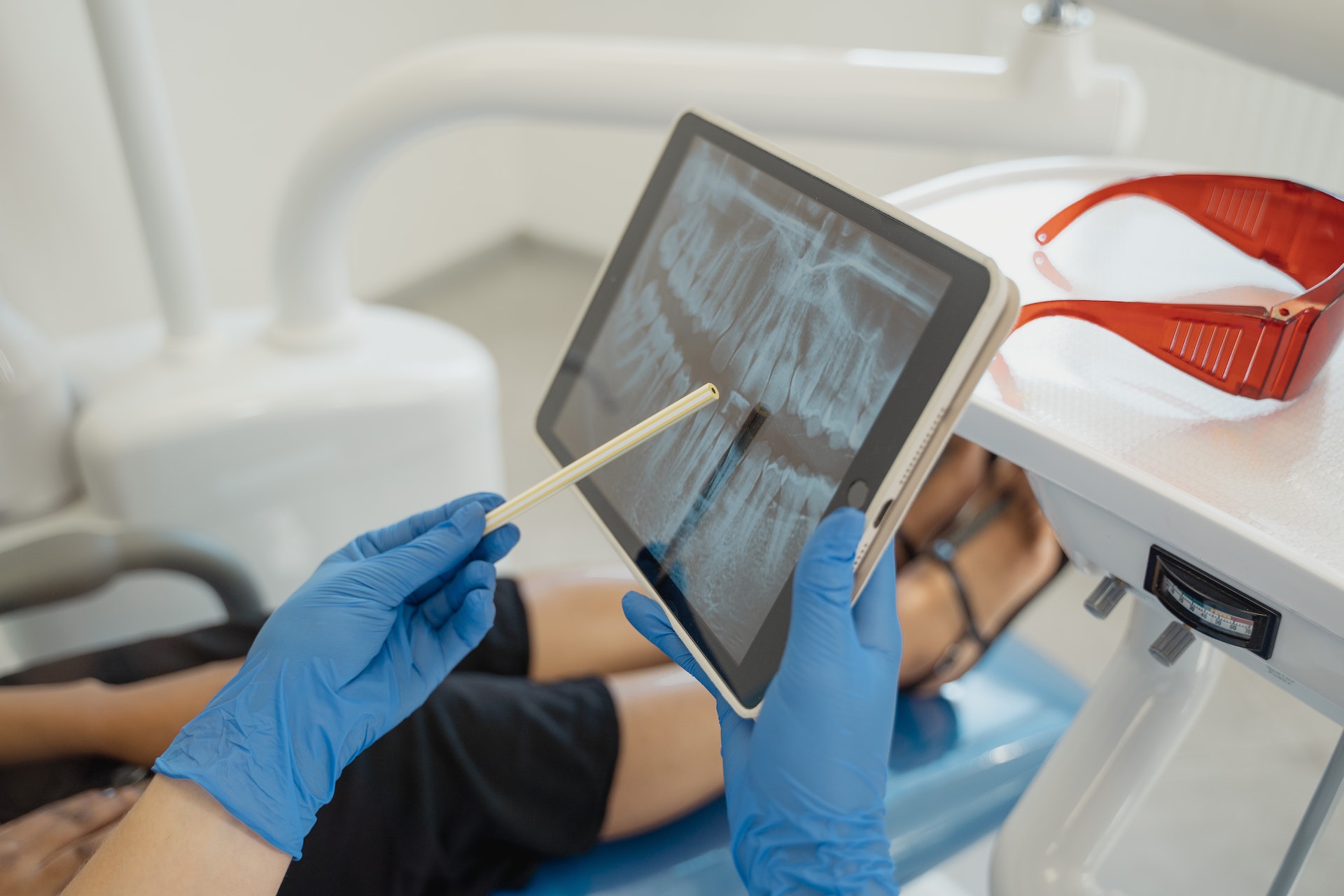Root Canal Treatment in Grand Prairie
What exactly is a root canal?
Also known as endodontic or pulpal therapy, a root canal involves removing the nerve inside an infected or damaged tooth. The inside of your tooth contains the blood supply and nerve endings, but you’ll feel pain and sensitivity when tooth decay reaches the pulp (the tissue inside the tooth). A root canal removes those nerves, eliminating your pain while allowing you to keep your tooth.
Why would you need a root canal?
The most common reason for pulpal therapy is a cavity left ignored. As a result, the decay from the cavity spreads to the inside of the tooth, infecting and damaging the pulp. Another reason you’d need a root canal is that a tooth broke or cracked to the point of exposing the nerve. Either way, it’s necessary to reduce the pain and sensitivity you’re experiencing and prevent the infection from spreading. Our dentist will let you know if further inspection needs to be done after dental cleaning to see whether you need a root canal treatment in Grand Prairie.


Who is a candidate for a root canal?
For those in the Grand Prairie area, Dr. Guirguis can examine your teeth to determine the necessary next steps. Often, a patient who needs a root canal will experience severe tooth pain and sensitivity to hot or cold temperatures. Usually, when someone in this situation learns they have an exposed nerve ending, the diagnosis makes sense — it explains all the pain!
Sometimes, however, a large cavity near the nerve will require pulpal therapy even if it does not cause any symptoms. This decay is often identified during a routine cleaning and examination. If Dr. Guirguis determines that you need a root canal treatment in Grand Prairie, the procedure must be done immediately to prevent the infection from entering the bloodstream.
What happens during a typical root canal?
Dr. Guirguis begins by administering a local anesthetic before isolating the infected tooth with a dental dam. Next, he will remove the decay and inner pulp. He then cleans the roots’ canals to remove any remaining infected matter.
Once the pulp is removed, the tooth becomes dry and is significantly more likely to crack or fracture. To prevent the tooth from weakening, tooth-colored build-up material is inserted, and we place a dental crown over the area. After completing the root canal, you’ll leave the office with a temporary crown and almost no pain or sensitivity.

How painful is a root canal?
Root canals get a bad reputation in movies and TV — maybe you’re picturing loud drilling noises or a shouting patient. In reality, patients don’t feel the procedure.
Definitive Dental takes pride in offering our patients the best quality dental care. When undergoing pulpal therapy, Dr. Guirguis ensures your mouth and gums are completely numb before starting the procedure. You may experience mild discomfort for a few days following the treatment, but most patients report that this is much easier to bear than the pain they felt before the root canal. Your mouth will be back to normal within a few days.
Why does a root canal take two visits?
Two visits are needed for root canal treatment in Grand Prairie to ensure the best possible outcome. The first visit is for the procedure where the pulp chamber is cleaned, and the infected tissue is removed. During the first visit, Dr. Guirguis will place a temporary crown to protect the area while it heals. The second visit is to ensure that the area has healed properly, remove the temporary crown, and restore the tooth with a permanent dental crown.
How much is a root canal in Grand Prairie, TX?
When considering getting a root canal treatment Grand Prairie, the pricing can vary depending on your requirements and the dentist’s expertise. The position of the tooth that needs root canal therapy at Grand Prairie can also determine the price. It can cost anywhere from $300 to $2000 per tooth without insurance. To know more about how much your Grand Prairie root canal treatment can cost, please contact our team.
Who needs a root canal?
Before looking into a root canal treatment in Grand Prairie, you must know whether you need one. Signs of a root canal can include persistent pain, swollen gums, and tooth discoloration. Schedule an appointment for a dental exam if you believe you need a root canal. Many patients may need dental fillings instead of root canals, and at Definitive Dental, Dr. Peter Giurgius can inform you after a thorough dental exam.
Is a root canal painful?
The root canal of a tooth contains infected pulp, which is what a dentist would remove. A dentist will then clean and shape the inside of the root canal before filling it. In the end, it is sealed to prevent any further damage. At Definitive Dental, we aim to take your smile to the next level while taking care of your comfort. We take pride in providing our Grand Prairie patients with the best dental care and experience. Our Profound Numbing Assurance ensures that all our patients feel comfortable during the process. You may experience some sensitivity after the procedure, but it is temporary. Contact us to learn more about our root canal treatment in Grand Prairie.
Definitive Dental: Dentistry Done Right!
If you live or work in the Grand Prairie area and suspect that you need root canal treatment in Grand Prairie, call or text us today at (972) 646-0660. We can get you in for an appointment with Dr. Guirguis as soon as possible and provide more information about the procedure.
FAQ
Click Order button next to the service you want to purchase and leave your contacts in a follow-up form. We will get in touch with you shortly to clarify all the details.
Click Order button next to the service you want to purchase and leave your contacts in a follow-up form. We will get in touch with you shortly to clarify all the details.








